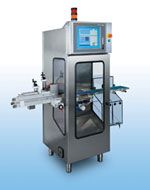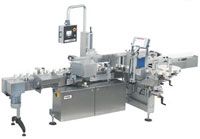Be Prepared for Serialization
Equipment and Processing Report
Equipment purchased today for the packaging line should be serialization-ready in preparation for upcoming requirements.
Serialization, the application of a unique item-level code that provides traceability and serves as the backbone of pedigree records, depends on integrated hardware and software plus data collection and access up and down the supply chain. With pedigree requirements in place or pending in several parts of the world and less than 24 months before the California E-pedigree Law begins to take effect on Jan. 1, 2015, it seems prudent for any current packaging-line equipment purchases to be serialization-ready so, when implementation time comes, the transition is as seamless as possible. The California law applies only to prescription drugs sold in the state. Unless and until FDA writes national regulations, however, industry observers predict the California law will serve as the de facto United States standard because it will easier to serialize all prescription products rather than segregating and serializing product destined for California.

Fortunately, it’s not that difficult to find machines that are serialization-ready. One checkweigher integrates printing of unique codes and verification with the weighing function. A single operator interface controls all action from one screen to simplify operation. Capable of weighing up to 550 packs per minute with an accuracy of ±50mg at 3 sigma, the checkweigher is compatible with a variety of coders and vision systems, giving brand owners the flexibility to specify their favorite models. Adjustable side belts maintain control of the bottle or carton moving through the machine to ensure correct positioning during marking and verification. Two reject systems, one working with the vision system and one linked to the scale, ensure only properly coded and filled packs continue down the line (Versa RxV Checkweigher, Thermo Fisher Scientific).
A label applicator applies serialized single, dual, or wraparound labels at rates up to 200 bottles per minute. An onboard, ultraviolet-inkjet printer prints two-dimensional barcodes on the labels and an integrated vision system verifies code quality and correctness. An Ethernet connection delivers serialized code data to e-pedigree software. The labeler also handles labels equipped with radio frequency identification (RFID) tags and can be configured to apply labels to round, square, or oval containers ranging from 1 to 14 in. (25 to 356 mm) high and 5/8 to 7 in. (16 to 178 mm) in diameter. Integration with shrink bundler, print-apply labeler, and case packer results in a serialization-ready line. Options include hot-stamp or thermal-transfer coders, barcode readers, and missing label detectors (Model 130 Bronco Labeler from NJM Packaging and TrackSafe hardware and software from Optel Vision).

A coding equipment supplier provides hardware, software, and services, including serialization-ready inkjet printers, laser coders, and line controllers. The line controller operates the code marking systems, cameras, reject mechanisms, and other external devices on the packaging line and helps aggregate codes for item, multipack, and case levels of packaging. For maximum flexibility, the line controller and software work with a variety of printers and cameras. The software also accommodates rework by deactivating the code on a rejected product and assigning a new code after rework (IMprints Track & Trace Solution, Videojet).
Another provider of serialization hardware and software supplies all necessary packaging line modules. The first module applies a unique, alphanumeric or two-dimensional DataMatrix code to primary containers, which proceed through a bundler. Codes on containers in the bundle are aggregated and bundles are labeled. Bundles are loaded into cases and aggregated, and cases are labeled. Cases are palletized, and pallets are aggregated (DataMatrix Station XMV bottle/carton marking or Bottle Serialization Station, Advanced Bundle Station, Shipping Case Station, Pallet Aggregation Station, Pilot Device Manager, Pilot Line Manager and Pilot Site Manager software from Mettler Toledo). For less automated lines, a standalone system, equipped with a scanner and printing equipment, provides a location for code marking and aggregation of codes on primary packages, bundles, cases, and/or pallets (Manual Aggregation Station, Mettler Toledo).
—Hallie Forcinio is Pharmaceutical Technology's packaging editor, editorhal@cs.com.
Drug Solutions Podcast: A Closer Look at mRNA in Oncology and Vaccines
April 30th 2024In this episode fo the Drug Solutions Podcast, etherna’s vice-president of Technology and Innovation, Stefaan De Koker, discusses the merits and challenges of using mRNA as the foundation for therapeutics in oncology as well as for vaccines.